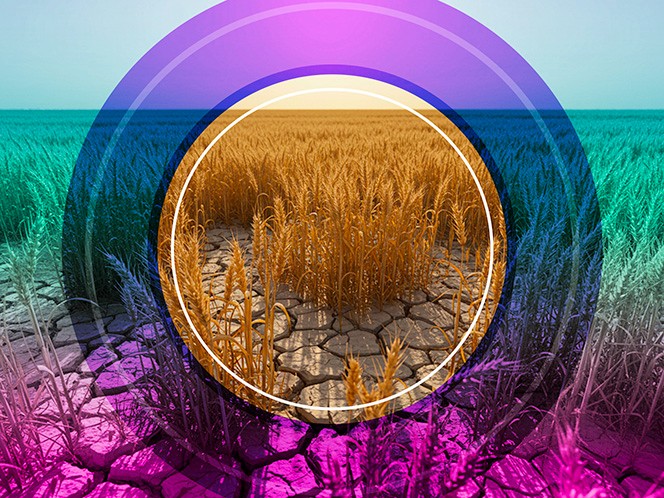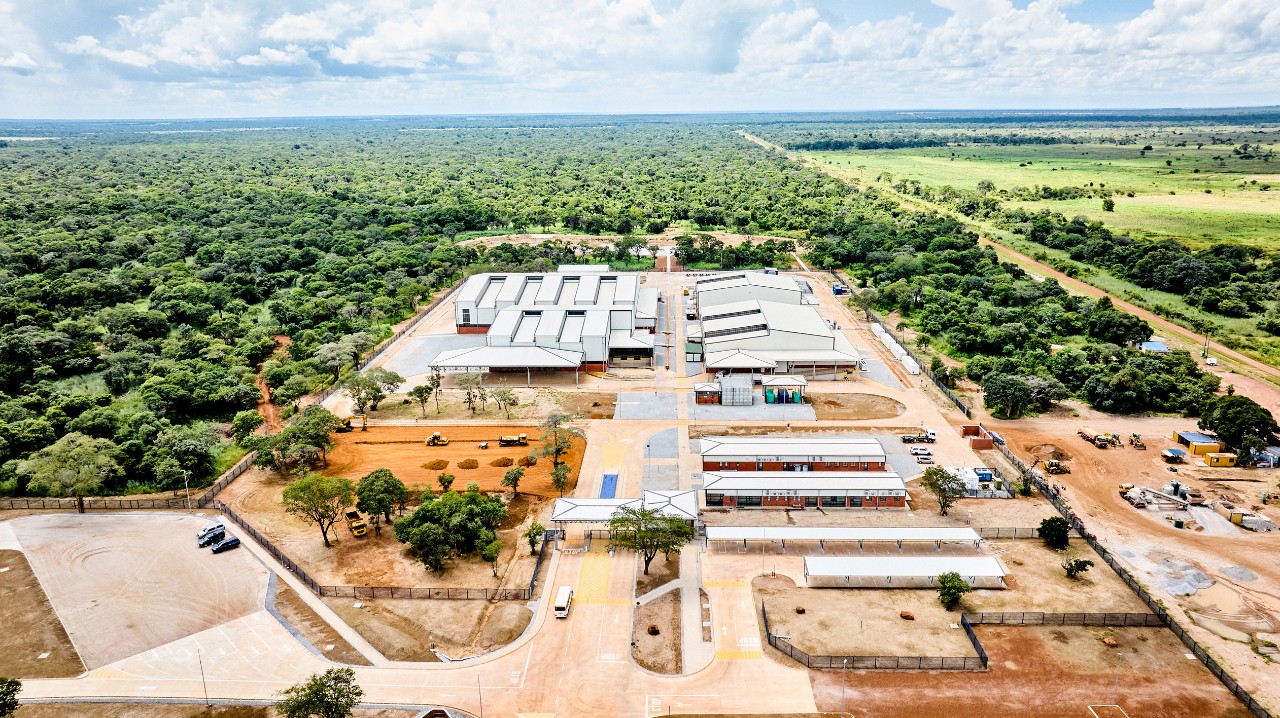How to make seeds more drought-resistant
Posted: May 05, 2025

In 2021, NASA predicted that climate change could impact the production of crops by 2030. It predicted declines in maize, soybean and rice crops, and growth in wheat harvests.[1] But extreme weather events are already affecting the taste of beer and increasing the price of chocolate. Increasing temperatures also have knock-on effects on pests and diseases, making farming even more complex. Alongside these challenges, the world’s population continues to grow—we need to feed more people than ever before, and scientists expect global food demand to increase 35–56% between 2010 and 2050.[2]
Researchers looking for ways to increase food supply and protect crops from the effects of climate change have turned to chemistry and genetics. Innovative coatings and hybrid strains have created drought-resistant and high-yield seeds that will help keep the world fed in fluctuating weather.
Our Industrial Life
Get your bi-weekly newsletter sharing fresh perspectives on complicated issues, new technology, and open questions shaping our industrial world.
Developing drought-resistant seed technologies
Researchers at MIT have developed a way to boost crop yields by helping seeds to survive and germinate during droughts. Healthy soil includes nitrogen, phosphates and potassium, but over-farming and droughts can create soil lacking these critical nutrients.
Benedetto Marelli, an associate professor of civil and environmental engineering at MIT, has developed seed coatings that envelop and nourish seeds during the critical germination process.[3] He created dual-purpose silk and polymer seed coatings that are embedded with bacteria that promote growth by absorbing nitrogen from the air. While bacteria are commonly used to promote seed growth, Marelli has combined it with a novel gel-like coating that holds onto any moisture it finds, protecting the seeds from drying out. In the lab, Marelli has shown that the seed coatings help germinating plants survive drought, ultraviolet light exposure, and high salinity.
Marelli worked with researchers at the Mohammed VI Polytechnic University in Morocco, a country that has experienced several recent years of drought, to trial the approach in the real world. For the Moroccan seeds, researchers used a biopolymer coating created from food waste, which was easy to access in Morocco.
Researchers discovered that even in water-stress conditions, coating common bean seeds helped the seeds to form root nodules, resulted in plants with better health, and mitigated water stress in drought-prone land.[4]
“We’re working with local communities to extract the biopolymers, to try to have a process that works at scale so that we make materials that work in that specific environment. We may come up with an idea here at MIT within a high-resource environment, but then to work there, we need to talk with the local communities, with local stakeholders, and use their own ingenuity and try to match our solution with something that could actually be applied in the local environment.” Marelli said in an MIT press release.
Selecting and breeding climate-resilient seed varieties
Last month Bayer, a multinational agricultural and healthcare business, opened a maize seed facility in Zambia, which it hopes will support food in the region. The €32 million facility will provide high-yield seeds to 6.4 million smallholder farmers in Zambia and other countries in Sub-Saharan Africa this year, covering the annual maize consumption of approximately 30 million people.
Researchers designed Bayer’s hybrid seeds by selecting positive high-yield growth traits, such as disease resistance and resilience. At Bayer’s breeding facility in France, its team combines DNA marker technology, AI and genetic diversity to breed multiple generations of plants each year to create new varieties.
The company says its new seed facility will increase the quantity and quality of available seeds, offering higher yields and enhanced resilience to climate and disease.

Bayer maize seed production center in Zambia, a key hub for Sub-Saharan Africa’s food supply. Source: Bayer AG
How hybrid seeds improve crop yields in Africa
In Rwanda, climate-proof seeds have led to bumper harvests. The Seed Resilience Project helps small-scale farmers access better quality seeds, helping them adapt to challenges including climate change and land constraints.[5]
Researchers tracked crops including tomato, pepper, cabbage, onion, cauliflower, watermelon, squash, broccoli, potato and carrot varieties from local and global seed suppliers. They tested each crop in multiple agro-climatic zones over several production seasons, and identified high-quality seeds in the nursery, tracking germination rates and seedling performance.
Researchers then shared this data with seed companies, helping them to refine and improve the seed quality with specific product profiles developed for each crop. Improved yield depends on multiple factors, including potential productivity, resistance to locally prevalent pests and diseases and climate adaptability. Hybrid varieties of plants, where multiple plants are bred to improve harvests or disease resistance, were found to result in yields up to five times higher than naturally pollinated varieties.
Michael Keller, secretary general of the International Seed Federation, emphasized the importance of locally adapted seeds for improving yields while speaking to smallholder farmers in southern Rwanda at the African Seed Trade Association congress in Kigali last month.[6]
The Seed Resilience Project’s trials conducted in Rwanda last summer showed significant improvements in crop yields from the specially selected seeds. Cabbage yields increased from 1,400kg to 7,000kg per 0.1 hectare, while tomato yields rose more than eight times the national average.
“We have to adapt our varieties to climate change, we need fully to improve our seeds to be more resilient to droughts, pests and diseases which are dramatically increasing throughout Africa," Keller told Top Africa News last month.
Community-based solutions for sustainable seed innovation
While climate change impacts countries differently, its effects on agriculture are felt universally: high and low temperatures can damage crops, and both droughts and flooding impact harvests. To build a food-secure future, establishing climate-proof agriculture that creates more resilient plants and higher yields is essential, but it’s not a one-size-fits-all approach.
Across regions, researchers emphasized the importance of working with local communities to come up with bespoke solutions to their food security problems. Seeds form just one part of the puzzle—farmers also need to consider and optimize factors such as soil management; pest, disease and weed control; irrigation; and crop rotation and planting density. Alongside this, researchers highlighted the potential of AI to revolutionize farming. AI’s ability to analyze vast quantities of data can help optimize breeding strategies, as seen in Bayer’s lab. Scientists could also use AI to predict climate events and improve crop management practices to build more sustainable food security.[7]
[1] Climate impacts on global agriculture emerge earlier in new generation of climate and crop models
[2] Integrative approaches to enhance reproductive resilience of crops for climate-proof agriculture
[3] Making agriculture more resilient to climate change
[4] Programmable design of seed coating function induces water-stress tolerance in semi-arid regions
[5] Climate-proof seed trials yield results in Rwanda
[6] Climate-proof seed trials yield results in Rwanda.
[7] Integrative approaches to enhance reproductive resilience of crops for climate-proof agriculture